
Round 1
Pull Ups
Round 2
One Arm Rows
1.5 deadlift
Dead Cleans
Thruster
Round 3
One Arm Swings
Snatches
Push Press
Reverse Lunge

Round 1
Pull Ups
Round 2
One Arm Rows
1.5 deadlift
Dead Cleans
Thruster
Round 3
One Arm Swings
Snatches
Push Press
Reverse Lunge
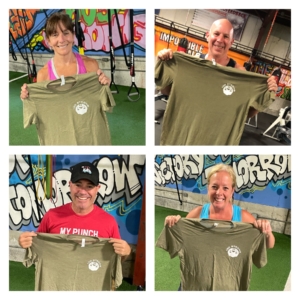
Round 1
Row
MB Squat to Throw
Shin Grabs
Round 2
Assault Bike
American Swings
Bicycle Crunch
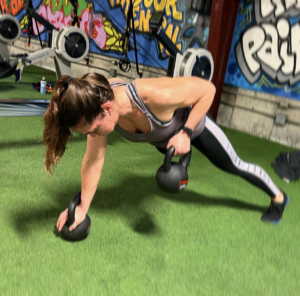
Round 1
Pull Ups
Round 2
DB KB Step Ups
Round 3
DB Deadstop Rows
DB LC Cleans
DB Thrusters
Push Ups
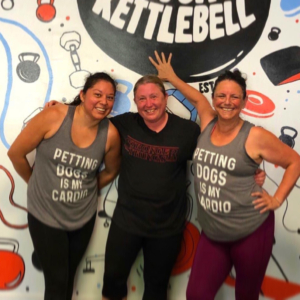
Round 1
Battling Ropes
MB Squat Cleans
Round 2
Ski Erg
Dumbbell Push Press
Round 3
Rower
Burpee + MTN Climber
Round 4
Assault Bike
KB SDHP
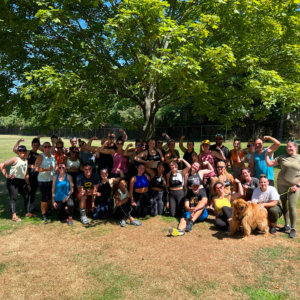
Round 1
Barbell Reverse Lunges
Round 2
Dumbbell Chest Press
Round 3
KB One Arm Rows
Round 4
TRX Hamstring Curls
Round 5
Landmine 1/2 Kneeling Press

Round 1
DB KB Rotational Thruster
Hanging Leg Raises
Ski Erg
Evil Wheel
Round 2
DB KB OH Lunge
Eifel Towers
Assault Bike
Dumbbell Renegade Rows
So, you’re walking down the sports equipment aisle of your local Walmart or Target (or your favorite sports retail store), and you stumble upon these funny-looking weights with a handle on top.
You may be wondering, “What are these strange weights?” and, “How are they different from traditional dumbbells?”
They’re called kettlebells, and while you can use them for many of the same exercises as dumbbells, the way they impact our bodies is slightly different.
Whether this is your very first encounter with a kettlebell, or you’re curious about the benefits they offer (and what the heck you’re supposed to do with them?), you’re in the right place! At Seacoast Kettlebell, we love everything about kettlebells — especially introducing these unique weights (and their incredible benefits!) to newbies like you.
Ready to give kettlebell training a try? Here’s everything you need to know to get started.
The first thing you may notice about kettlebells is their unique shape and design compared to traditional dumbbells, which feature round rubber weights in the shape of a hexagon on each side of a cylindrical bar. Kettlebells are designed this way for a reason. While dumbbells distribute the weight evenly on each side of a bar, a kettlebell’s weight sits primarily in the centralized, round-shaped part, with a handle on top.
Kettlebell exercises are typically compound movements that train multiple muscle groups simultaneously, vs. dumbbell exercises, which are typically used to target a specific muscle group. Therefore, when talking about kettlebell exercises, we categorize them according to the movement patterns they involve rather than by individual muscle groups. The five basic movement patterns are hinging, squatting, pushing, pulling, and core.
There are many great reasons to exercise with kettlebells over traditional dumbbells; here are a few of the top benefits:
If you’re looking to create a solid kettlebell workout that won’t feel impossible but will push your limits, we’ve put together some of the simpler kettlebell moves to create the ultimate kettlebell workout for beginners.
Some exercises may be more complex and therefore may require more practice than others. We recommend starting with a lighter weight while you’re learning a new movement. When a move is more complex or challenging, you may want to try doing it without any weight until you achieve proper form to avoid injuring yourself.
Ready to dive in? Let’s learn the moves.
Our kettlebell beginner workout is split into two full-body workouts, alternating between “Workout A” and “Workout B” for a total of three workouts each week for four weeks.
Here’s how to do each move listed in “Workout A” and “Workout B” above. Read and watch below, and then give it a shot. These are some of the most basic moves, so we’re confident you’ll get the hang of them in no time.
It’s so important to warm up properly before doing any type of exercise–especially one that uses multiple muscle groups. When you warm up your body, it helps to lubricate your joints, which makes moving your muscles easier and ultimately helps prevent injury.
Unfortunately, many people opt to skip the warmup for one reason or another, but we strongly advise against it!
Before you start swinging kettlebells around, you’ll want to get your body warm and flexible so it’s easier to do the moves – and so you don’t pull a muscle in your first set of reps! Here’s our recommended warm-up routine for the beginner kettlebell workout.
We suggest starting your warmup with five or ten minutes of easy, steady-state cardio, such as walking, running, or biking. This will bring your body temperature up a bit, so it’s ready for some dynamic stretching.
You’ll use a lot of different muscles and joints during kettlebell workouts, so it’s best to ensure your body is ready to move accordingly. Complete the following stretching exercises before you jump into the workout:
Stand with your feet slightly less than shoulder-width apart. Take both arms and swing them in a big, circular motion. Do ten forward circles and ten back circles.
Stand with your feet less than shoulder-width apart and swing your arms up to the sky. Hinge at the hips and swing your arms down toward the ground. Repeat ten times.
Stand with your feet about shoulder-width apart and twist your torso left and right, swinging your arms loosely from side to side. Repeat ten times on each side.
Place your hands on your hips and rotate your hips in a wide, circular motion. Make ten circles in each direction.
Stand with your feet a little wider than your hips. Squat down, keeping your knees wide and your chest up. Push your hands together to stretch your forearms and wrist simultaneously. Repeat slowly ten times.
Stand up tall. Then lower your body and place your hands on the ground, with your legs straight. Walk your hands out into a plank position and perform a pushup. Keep your core tight and be careful not to let your hips sag. Drop to your knees for the pushup if needed. Push yourself back up into a plank position and walk your feet back to your hands. Repeat ten times.
Get down in plank position. Step your right foot forward and place it on the outside of your right hand. Keeping your foot planted, push your front knee outward to stretch out your hip. Sink your hips a little lower and twist your body to the left, reaching your left arm up to the sky while keeping your feet on the ground. Alternate legs for a total of ten on each side.
Lie on your back and pull your knees into your chest. Stretch your arms out wide on each side, and roll your knees to one side, keeping your shoulder blades touching the floor. Do ten twists per side.
Now that your muscles are warm — and hopefully you’re sweating a little? — it’s time to start your workout. Remember to start with a light to moderate weight for each exercise, which will allow you to perform multiple repetitions of each exercise in the workout.
Monday: Workout A (8 reps)
Tuesday: REST DAY
Wednesday: Workout B (8 reps)
Thursday: REST DAY
Friday: Workout A (8 reps)
Saturday: REST DAY
Now that the warmup and workout are complete, it may be tempting to call it a day. But there’s one more step you shouldn’t skip — the final stretch and cool down. Take a few minutes to stretch out the areas of your body you used in the workout, so they aren’t stiff the next time you go to use them.
Simple Stretch and Cooldown Routine
Here are some simple stretches you can do to end your workout:
This move is excellent for stretching out your lower back and slowing your heart rate down in the process. It’s a versatile move that you can do in both the warmup and cooldown.
This move is great for removing tension in your hips, glutes, and thighs.
This move helps to open your hips and stretch your glutes and back. It’s also great for your abdominals, shoulders, and neck.
This move looks a little funny but is great for stretching your shoulders, neck, and chest and releasing tension in your spine.
This is a popular yoga pose, but it feels amazing and is great for stretching your glutes, things, and spine.
Now that you know how to do each move, all that’s left for you to do now is grab a (light) kettlebell and give kettlebell training a try. Remember to focus on form first. There’s no need to rush through the moves, especially when you are first learning them. That’s how injuries happen.
By the end of the four weeks, you’ll be ready for an intermediate kettlebell workout. But let’s get these moves down first, deal?
Want to join a fun gym with coaches who know your name and fellow gym members who clap for your accomplishments? We’ve created a welcoming community of coaches and members who are just out to have a good time while working out—with no judgments. Sound like a sweet deal?
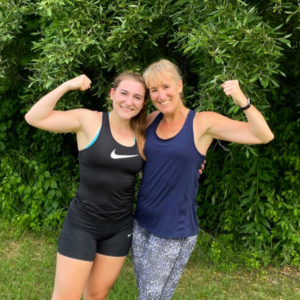
Round 1
Turkish Get Ups
Round 2
DB Dead Cleans
Round 3
Snatches
Goblet Split Squats
LC Clean + Push Press
Can Openers
Cardio
